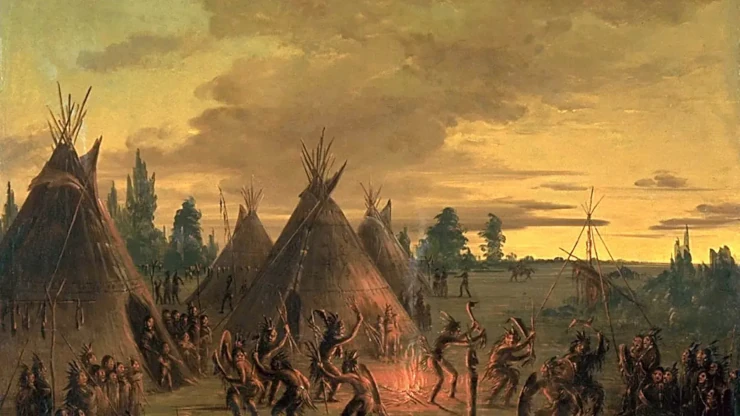


The championships are organized in groups according to the type of dance, age and gender, and usually include traditional, fantasy, grass, mantle and cascade dances. Participants wear suitable clothes for the type of dance they perform.
A fantasy artist adorns her body with feathers and cushions, while a dancer with mantles wears a chalice of long flecos on her dress, mocassins and polenas carefully adorned with counts. This name is given to the performers of the dance with cascades due to the bells that decorate their costumes.
The judges, who are often powwows competition champions, judge the contestants and not only their mastery of style, but also their ability to follow the rhythm of the song and finish the dance with the last touch of the drum. The winners usually make one for the audience to applaud them.
The ceremonies to invoke rain are one of the most important events of the annual rituals in the arid lands of the southwest. The most important are performed by specialized sacred groups, such as the hopis snake dancers, whose one-week rites are held every two years at the end of the summer. The hopis believe that the snake's sinuous shape resembles the lightning that precedes the rain. They want the dances to be a great demonstration of community respect for the offices that produce the rain that allows crops.
During the first four days of the ceremony, members of the society are interned in the desert to catch snakes and take them to the village. The members of the holy societies of the hopis ritually represent the primordial events during the next two days and two nights in a ceremonial chamber or chamber. During the rest of the celebration, races, dances (priests holding with their mouths mortal snakes, even cascabel) and the final blessing are held. The offices are collected and sent back to the desert. By the late 19th century, photographs of snake dances became so popular among white Americans that there was an army of photographers who competed with each other and altered sacred rituals. The hopis gradually established a ban on visitors taking photographs during the ceremonies, which remains in force today.
In 1973, members of the Indian American Movement occupied Wounded Knee for several weeks. The spiritual leader of the occupation, Leonard Crow Dog, always believed that the Lakotas emissaries who spoke to Wovoka had misinterpreted his message.
When they should have seen circular dance as a means of keeping traditions alive, creating a link with history and ancestors, they believed that they could bring back the dead.
Crow Dog directed a Dance of the Spirits at the site of the 1890 massacre during the protest. Thro the night, the women worked making shirts for the dance with curtains and arpillers painted in the traditional style.
Many of the dancers wore reversed American flags, which is a common way of expressing their dissatisfaction with the Movement.
Crow Dog has practised the Dancing of Spirits at Crow dog's Paradise, a family-owned property in the Rosebud Reserve in South Dakota, since 1973.
 Native American Cultures: Myths and magic
Native American Cultures: Myths and magic
You can purchase this book on Amazon.
This book challenges deep-seated stereotypes and offers an enriching perspective that contributes to a more comprehensive and respectful appreciation of the indigenous peoples of North America. Through an understanding of their myths and beliefs, we are taking an important step toward cultural reconciliation and the recognition of the diversity that has enriched the history of this continent.
These mythical stories, many of them linked to the literary genre of fantasy, reveal a world where the divine and the human intertwine in narratives that explain the cosmic order, creation, and the fundamental structure of the universe. Discover how these sacred tales bear witness to the deep connection of the natives with nature and spirituality.
Native Americans: Population and Territories
Native Americans: Cultures, customs, worldview
Traditions, myths, stories and legends